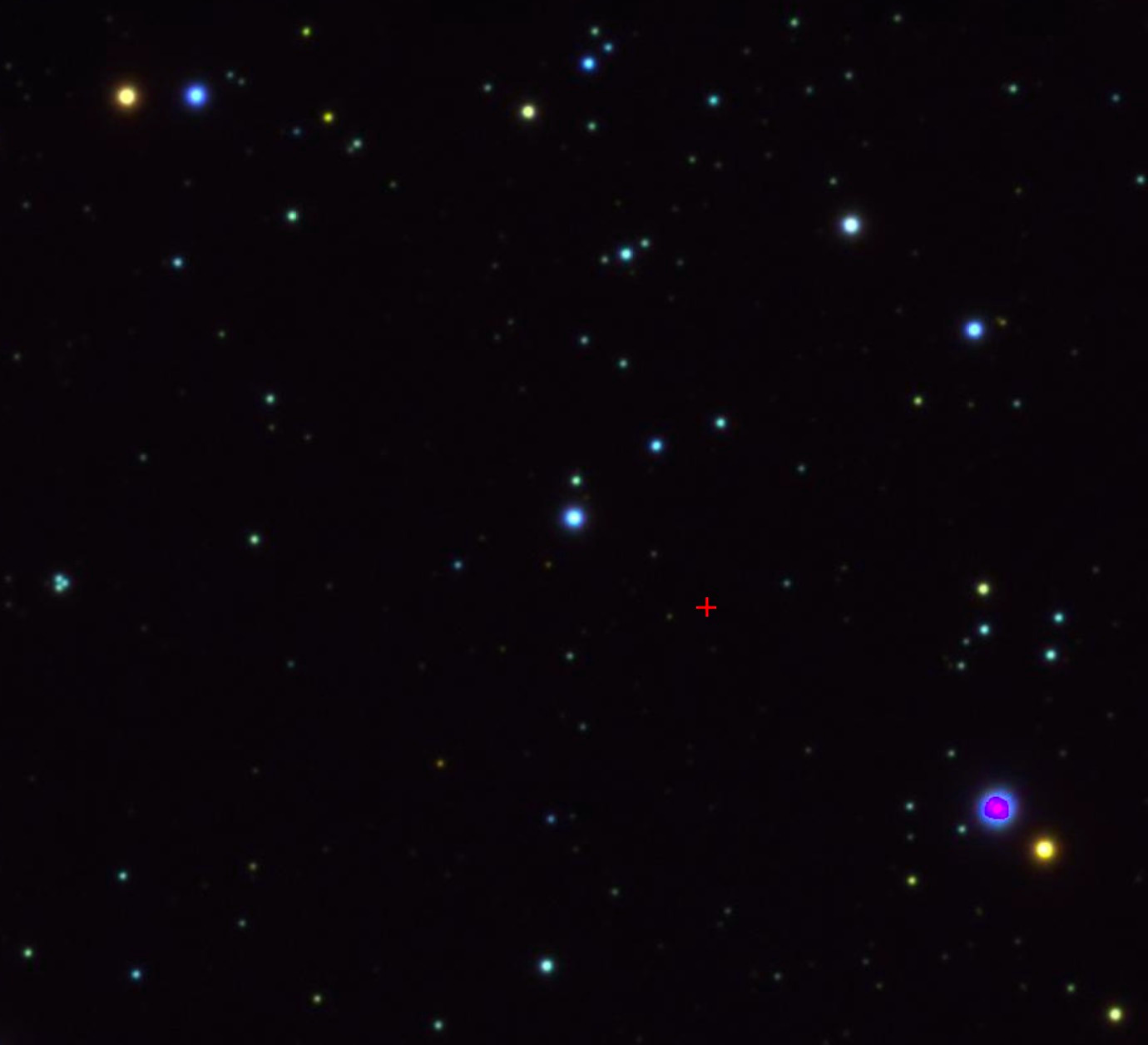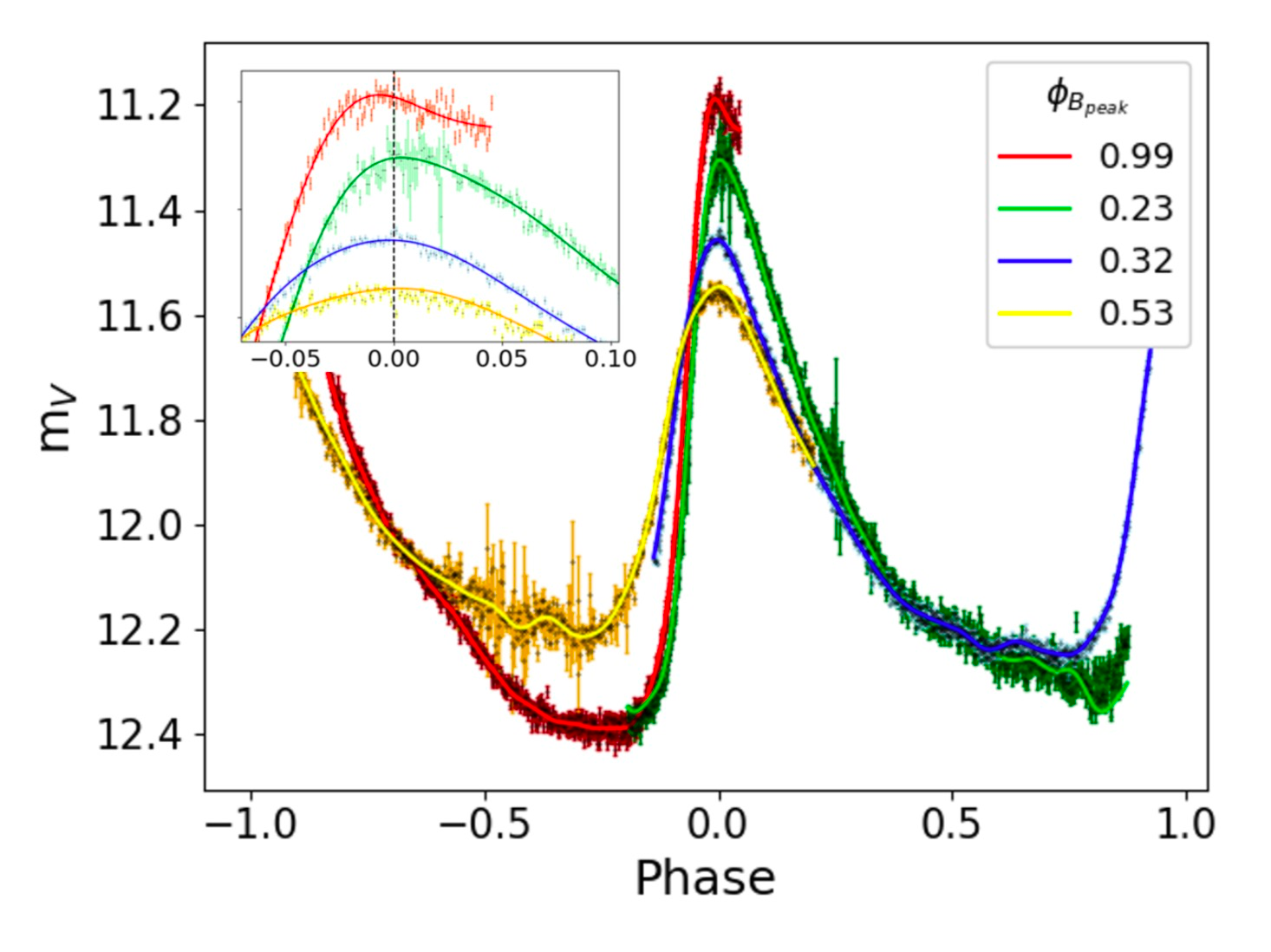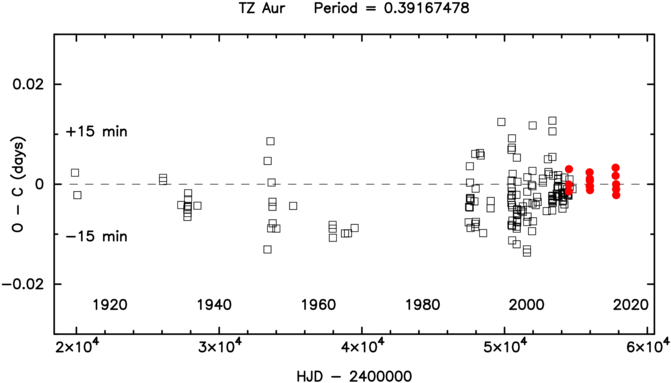 |
Department of Physics | AstroLab |
A Study of a Pulsating Variable
A small percentage of stars vary in brightness periodically. So far over 100,000 have been catalogued. An important class of variable stars are the pulsating variables. As these stars periodically expand and contract their luminosity changes. Different types of pulsating variables can be distinguished by their light curve. Well-known types include the Cepheids and RR Lyrae stars.
The aim of the project is to determine the light curve and hence the period of an RR Lyrae star. By choosing variable stars with adjacent non-varying stars the light curve can be easily determined from measurements of the relative brightness. How well can the light curve and period be determined? Using archival and published data for this system is there any evidence for a change of period?
An example of the type of observations required and the type of results achieved for this project is given below.

|
This is a 60-second V-band colour image of the field around AH Cam and the adjacent stars of similar brightness. The brightness of AH Cam is measured relative to these stars. By making a series of such observations over the term the brightness variations of the AH Cam star can be determined.
Below is the light curve for AH Cam as measured by Astrolab students Sam and Hannah. Each curve is based on a approximately five hunded 30-second exposures taken on different nights. Models for the light curves are shown as the solid lines. The change in normalisation is a result of the Blakzho effect. Using this data they determined a period of pulsation of 0.368715[6]d and a Blazkho normaltions 0.38+/-0.02mags.

By using literature measurements of maxima times the long term trends in the pulsation period can be mapped. The figure below displays the observed minus calculated (O - C ) maxima times for the RR Lyrae TZ Aur; Durham measurements are displayed as red points whereas the literature values for the maxima as listed in GEOS RR Lyrae database are showed as open squares. The pulsation period for TZ AUR has been constant over the last ~100 years, e.g. for over 93,000 cycles.

Project Notes Project References
| Back to the AstroLab Home Page |